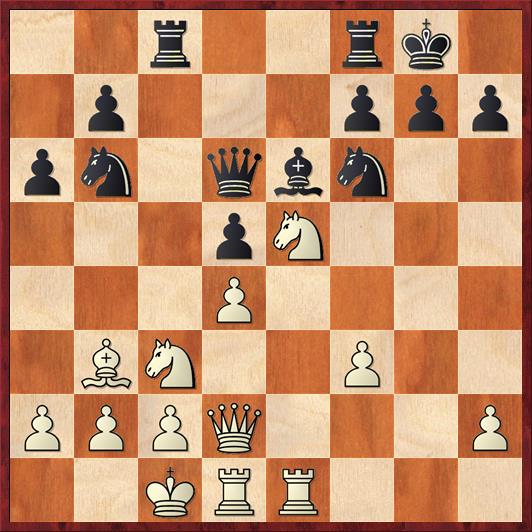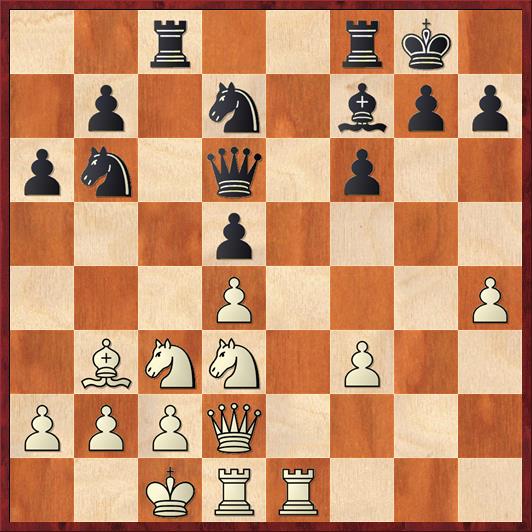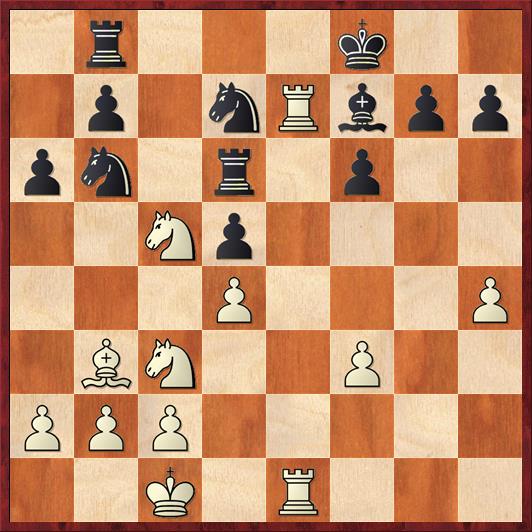Okay, bad pun, but now is the time to get on the Jeffery Xiong train! It’s currently boarding passengers in Khanty-Mansiysk, Russia, and the next stop is Yekaterinburg, where next year’s World Championship Candidates tournament will be held. All aboard!
Okay, my announcement may be a little premature, but that’s part of the fun of being a fan, not a competitor.
In the round of 16 of the World Cup, which is a qualifying tournament for the world championship cycle, the 18-year-old U.S. prodigy is playing against (I believe) the second-youngest player remaining in the field, 21-year-old Jan-Krzysztof Duda of Poland. Duda won the first game of their two-game match as White, putting Xiong’s back against the wall. Xiong had to win today or his tournament would be over. He played the Bishop’s Opening as White, and after 17 moves they got to this position.

White has a slight advantage for several reasons: (1) The knight on e5, currently the most dominant piece on the board; (2) Potential pressure on the g-file; (3) Several of Black’s pieces are either in each others’ way or doing nothing. Black’s next move tries to solve problem (1) at the expense of making problem (3) a lot worse.
17. … Nfd7?
A few weeks ago Mike Splane and I were talking about one way to compare candidate moves: Which move causes the fewest pieces to get in each others’ way? In this position, I think that the plan … Rfd8 and … Ne8 fills that bill. On e8 the knight protects g7, frees the f-pawn to move to f6 and evict White’s knight, and most importantly it doesn’t get in the way of the other pieces that need the d7 square or the d-file.
It’s really neat to see how Xiong exploits the tangled formation of Black’s pieces.
18. h4 f6 19. Nd3 …
The square c5 will be almost as good for this knight as e5 was. Meanwhile, Black’s position is starting to develop holes: a weak square on e6, a possible invasion square for White’s rook on e7.
19. … Bf7

White’s next move looks harmless but it’s actually lethal.
20. Qf4! …
What I like about this move is how un-dogmatic it is. Many players, in a win-or-else situation, would not think of trading queens. They would save their queen for a dubious attack on the g-file, perhaps. But Xiong sees that the Black queen is the only thing holding his position together: in particular, it defends d5 and e7.
20. … Rc6
What else can Black do? 20. … Qxf4 21. Nxf4 would win the d-pawn for White. This variation is one where you really see the cost of putting the knight on d7. Black can’t run from the queen trade either, as 20. … Qc6 would be met by 21. Nb4.
21. Qxd6 Rxd6
The rook is so awkward here, surrounded by its own teammates..
22. Nc5 Rb8
More pieces in the way of other pieces; the b6 knight is in the way of the b-pawn, so Black is obliged to make this sad move.
23. Re7 Kf8 24. R1e1 …

What an amazing transformation has taken place in 7 moves! Black is in a terrible bind; hardly any of his pieces can move. White threatens a4-a5 or just Ba4. Rather than sit and be tortured, Duda decides to give up a little material, but it doesn’t really solve his problems.
24. … Nxc5 25. dc Rd7 26. Rxf7+! Kxf7 27. cb R8d8
White has lots of ways to win, but I like the simplicity and ruthlessness of the one he chooses.
28. Nxd5! Kg6
Black might as well resign. The main point was that 28. … Rxd5 29. Rd1 Ke6 30. f4! is zugzwang. Black is reduced to pawn moves, and he will run out. If 30. … g5 White can simply trade everything on d5 and win the pawn on g5.
The rest of the game was not too interesting, so I will skip it. Duda played until the time control on move 40, then resigned.
Xiong was not the only U.S. player who had a good day. Leinier Dominguez Perez, who is now playing under the U.S. flag although he has played for Cuba most of his chess career, was in a similar win-or-go-home situation against the formidable Alexander Grischuk, and he likewise saved his tournament. In fact, this is the third time that Dominguez has pulled out a “win on demand,” after twice falling a game behind Wang Hao in the previous round before eventually winning, 4 1/2 – 3 1/2. They call him the comeback kid!
The third U.S. player in the round of 16, Wesley So, could not pull out a win on demand against Nikita Vitiugov of Russia; they drew and so Vitiugov won the match, 1 1/2 – 1/2.
Tomorrow Xiong and Dominguez will play rapid tiebreakers to decide their matches against Duda and Grischuk. The other matches that also are going to tiebreaks are Ding Liren against Kirill Alekseenko, Shakhriyar Mamedyarov against Teimour Radjabov (yes, that’s Azerbaijan against Azerbaijan) and Le Quang Liem against Levon Aronian. It’s interesting that 3 of the top 5 seeds (Giri, So, and Nepomniachtchi) have already been eliminated, and the #1 seed, Ding, has to survive a playoff against the #49 seed (Alekseenko). This is what I love about the World Cup! It’s a chance for the not-quite-top tier grandmasters to show that they can beat the top tier ones.



{ 2 comments… read them below or add one }
I was grumbling a little to an online chess friend about the very strong youth players in my town, and she shut me right down: “Honey, I come from the same chess club as Jeffery Xiong.”
Jeffery Xiong is a genius! I watched him play in the World Open and he was always so calm and cool, regardless of what was going on. His last game ( a must-win as black over a GM) was a masterpiece. I think he’ll end up being one of the top 3 American GMs in a very short time, and get more opportunities in international tournaments.